NIL
Buss family to sell Lakers at $10 billion valuation to Dodgers owner Mark Walter



By Joe Vardon, Mike Vorkunov, Fabian Ardaya and Andy McCullough
The Buss family has agreed in principle to sell the Los Angeles Lakers, one of the most iconic sporting brands in the world, to financier Mark Walter in a deal that values the team at a global record $10 billion, league sources told The Athletic.
Advertisement
“Mark Walter is entering into an agreement to acquire additional interests in the NBA’s Los Angeles Lakers, of which he has been a stakeholder since 2021,” a spokesperson for Walter said in a statement to The Athletic.
The sale, which is not yet finalized, could eventually value the team at $12 billion, according to one source with knowledge of the negotiations, who spoke on the condition of anonymity because they were not authorized to discuss the transaction. That would be far more than the $6.1 billion valuation for the Boston Celtics when they were sold in March.
Even at the lower number, the sale would be the largest for any sports team, and it will affect not only how competitive the Lakers can be in the NBA, but also impact the other storied Los Angeles sports team for whom Walter is the controlling owner, the Dodgers.
Jeanie Buss, 63, will remain governor after the sale is complete, a league source said. Her father, Jerry Buss, purchased the Lakers in 1979, and the following year the Lakers were NBA champions, the first of 10 titles they would win under his ownership. With stars like Kareem Abdul-Jabbar and Magic Johnson, the “Showtime” Lakers of the 1980s helped reinvigorate the league’s popularity and made the franchise one of the most popular in sports.
Jeanie Buss has been team governor and controlling owner since 2017, four years after her father died and a legal dispute among his children was settled, allowing her to take control.
The pending sale was first reported by ESPN.
Walter, 65, is chief executive of Guggenheim Partners, a global financial services firm with more than $325 billion in assets. He led the group that bought the Dodgers in 2012 for $2 billion. The franchise has won two World Series titles since and operated as one of the best organizations in professional sports.
Advertisement
Walter first took a stake in the Lakers in 2021 when he and Todd Boehly bought a 27 percent share of the franchise, then valued at about $5 billion, including a right of first negotiation, according to one source with knowledge of the deal.
Buss bought the Lakers for about $68 million from Jack Kent Cooke, the former owner, in a complex deal that also gave him the Los Angeles Kings and the Forum. The price of the Lakers has gone up drastically since then.
The Lakers have won 17 NBA championships — second only to the Boston Celtics — and have at multiple points employed the “face” of the league, or a player so important professionally and culturally that he transcends any box score. From Wilt Chamberlain to Abdul-Jabbar to Johnson to Shaquille O’Neal to Kobe Bryant to LeBron James, the Lakers added to that impressive list by trading for perennial MVP candidate Luka Dončić last February.
One of those legends, Johnson, who is part of the group with Walter that purchased the Dodgers, expressed his excitement about the Lakers sale.
“Laker fans should be (ecstatic),” Johnson posted to X. “A few things I can tell you about Mark — he is driven by winning, excellence, and doing everything the right way. AND he will put in the resources needed to win! I can understand why Jeanie sold the team to Mark Walter because they are just alike.”
James, who is 40 and has played 22 seasons, is said to be comfortable with the sale, though he is nearing the end of his career.
Dončić, meanwhile, is 26 and eligible for a $229 million contract extension. While paying multiple players a maximum salary has never been an issue for the Lakers, spending outside of the roster occasionally has been problematic for a team with such a strong brand.
The Buss family fortune was largely tied to the Lakers, whereas most owners in the NBA today made their money outside of the sport. The Lakers have, in the past, been more frugal when it comes to paying coaches, front-office executives, buying draft picks in the second round and other ancillary but important functions for running a world-class organization.
Advertisement
“I’m really excited — now the Lakers will be able to spend like they should spend,” said one league source with ties to the franchise.
Walter’s group, Guggenheim Baseball Management, bought the Dodgers for $2.15 billion in 2012 from owner Frank McCourt, who had driven the club into bankruptcy. Walter outbid a $2 billion offer from Steve Cohen, the future owner of the New York Mets, to secure the club. The group was fronted by Johnson, with former Atlanta Braves and Washington Nationals executive Stan Kasten designated as the team president. The Guggenheim investors included film producer Peter Guber and Boehly.
Walter sunk millions into rebuilding the team’s roster, improving its internal infrastructure and renovating Dodger Stadium. The club has not missed the postseason under his guidance, with championships in 2020 and 2024. Along the way, Walter added more sports assets to his portfolio. In 2014, he purchased a stake in the WNBA’s Los Angeles Sparks. He owns the Professional Women’s Hockey League and has begun investing in motorsports.
“Speaking from (the perspective of) a Dodger employee, he’s very competitive,” Dodgers manager Dave Roberts said. “He’s going to do everything he can to produce a championship-caliber team every single year and make sure the city feels proud of the Lakers and the legacy that they’ve already built with the Buss family.”
In 2021, Walter and Boehly added a stake in the Lakers. A year later, Walter joined a Boehly-led group, BlueCo, that overtook Chelsea F.C. The group also owns the French soccer club Strasbourg.
The Dodgers under Guggenheim’s management have seemingly taken their revenues to a different stratosphere with the acquisition of Japanese superstar Shohei Ohtani to a 10-year, $700 million deal in December 2023, dramatically shifting their business opportunities abroad as they have opened their last two seasons in South Korea and Japan. They committed approximately $1.4 billion in new salaries in the same offseason when they signed Ohtani, and backed that up with a substantial investment this past winter. Their payroll has remained among the game’s highest, with an expected investment of nearly half a billion dollars in the 2025 Dodgers alone between payroll and expected luxury tax payments.
“Our business is very healthy,” Dodgers president of baseball operations Andrew Friedman said this past November.
Advertisement
Ohtani signaled his desire to join the Dodgers was in part because of the ownership group’s investment and stability, attaching himself at the hip to Walter and Friedman through a “key man clause,” meaning that Ohtani could opt out of his deal if either left the organization. With Walter’s purchase of the Lakers, it appears he’s not leaving any time soon.
(Photo: Jevone Moore / Getty Images)
NIL
Why the NIL era will continue to force more QB transfers
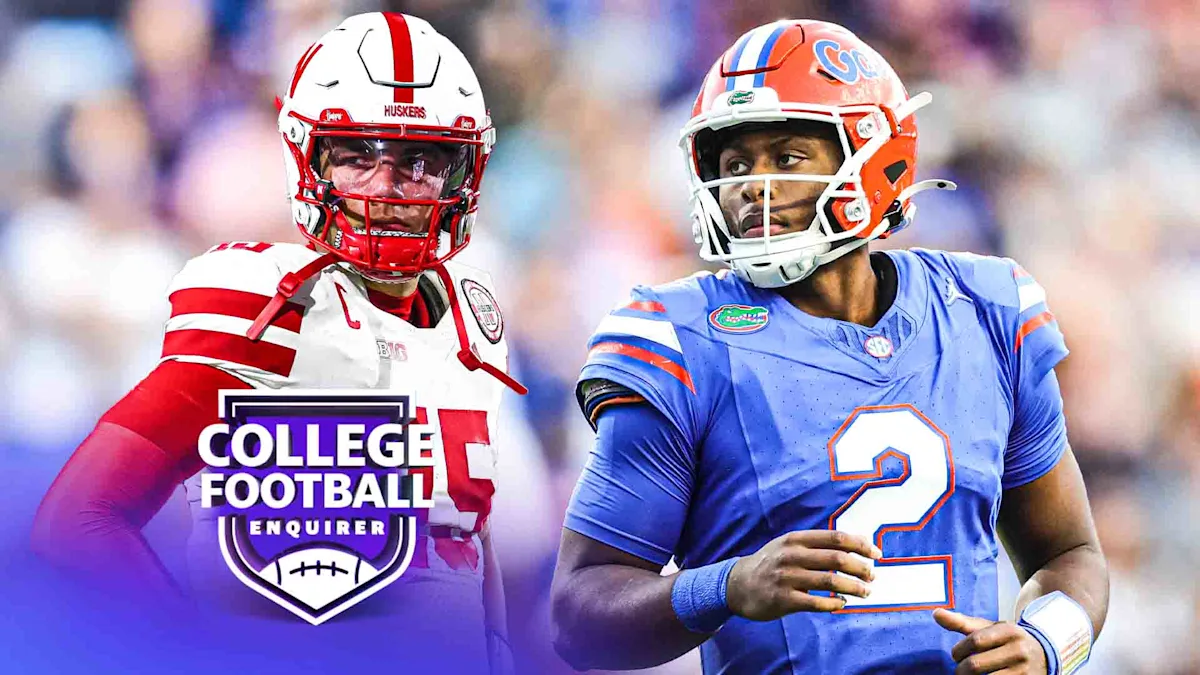
College Football Enquirer co-hosts Andy Staples, Ross Dellenger and Steven Godfrey discuss the decisions by Dylan Raiola and DJ Lagway to enter the transfer portal and why the moves are a sign of more to come when quarterbacks are paid highly but don’t meet expectations on the field. Check out the full conversation on the “College Football Enquirer” podcast – and subscribe on Apple Podcasts, Spotify, YouTube or wherever you listen.
Advertisement
Video Transcript
I do think we’re seeing something a bit different now.
And we started to see it last year, but Ross brought it up with the Royala situation.
I talked about it with the Lagway situation.
These guys are established starters.
Who, if one had a coaching change, that adds something to it, But the other didn’t have a coaching change.
But neither of them lived up to their lofty expectations or lofty paycheck, And I do the latter, right.
And I do wonder until there’s a CBA and you have binding contracts both ways.
I don’t know that we’re gonna see, like, you gonna have to really earn and kind of sing for Your supper as a QB.
Advertisement
You’re gonna have to earn it, or you’re gonna have to be drastically underpaid.
Threatened to leave, then got overpaid.
So basically, if you’re a successful quarterback in a three-year span, you’re constantly Renegotiating: correct if you’re at one institution, yes.
You’d better be good enough to justify your price point or willing to take a cut.
That is the that’s the conundrum there and you can price yourself out of market Well.
And that’s, that’s the other thing people Need to be careful.
That’s what they, you know, We talk about a truly free market, and thats kind of what This is.
This is a truly free market, but there’s always An upper boundary.
Advertisement
It’s interesting how these things are going now to be handled financially in the offseason.
If there can be any stability, um, as you are performing at or above Expectation as a quarterback, because otherwise wethis is probably going to be the norm.
We’re probably gonna have a Black Monday type situation.
Every December, in the quarterback free agency market, if we don’t get a little more guard, A little more guardrails around that, yeah, until some kind of, you know, Bargaining agreement in more binding contracts are, uh, Uh, come to college football, which doesn’t sound like it’s anytime soon, Although, because of failures in Congress, the CSC participation agreement, I think there’s more, more than not, and this is something that was a topic in Las Vegas last Week, uh, um, is, yeah, more, more talk about, Well, what other options do we have?
Advertisement
Which is really just one other option.
Remember, coaches have always cut loose QBs.
They didn’t want it.
That’s always happened.
Yeah, runoff was like a common verb when coaches talked off the record about How they were gonna handle their roster.
We’re running that guy off.
So this is, if anything, a new market that gives at least these guys a little bit of cash first They get it before they go out the door.
NIL
Ohio State QB Julian Sayin makes NIL announcement before College Football Playoff

Julian Sayin is steering Ohio State toward a national championship run with one of the most loaded rosters in college football. The Buckeyes secured the No. 2 seed in the College Football Playoff despite stumbling against Indiana in the Big Ten title game.
That loss stung, but it did not derail their season. Ohio State still earned a first-round bye alongside Indiana, Texas Tech, and Georgia.
MORE: Florida quarterback DJ Lagway announces transfer portal decision
While the team enjoyed some extra rest before the postseason grind begins, Sayin grabbed attention off the field. He announced a new NIL partnership with Wingstop and Dr Pepper, posting the news himself.
“Postseason calls for big plays with @drpepper and @wingstop, had to get the play card out,” Sayin wrote.
The deal adds to an already impressive NIL portfolio. Sayin previously signed with The Foundation, Dick’s Sporting Goods, and JLab Audio. His current NIL valuation sits at $2.5 million, according to On3.

Ohio State Buckeyes quarterback Julian Sayin talks to media following the NCAA football game against the Michigan Wolverines at Michigan Stadium in Ann Arbor, Mich. on Nov. 29, 2025. Ohio State won 27-9.
Sayin’s path to Columbus took a detour through Tuscaloosa first. After a brief stint with Alabama, he flipped his commitment to Ohio State and headed to the Big Ten. That decision paid off immediately.
In his first season as the Buckeyes’ starting quarterback, Sayin led the team to a 12-1 record and a Heisman Trophy finalist nod. The former five-star recruit has lived up to the hype.

Ohio State Buckeyes quarterback Julian Sayin (10) motions during the Big Ten Conference championship game against the Indiana Hoosiers at Lucas Oil Stadium in Indianapolis on Dec. 6, 2025. Ohio State lost 13-10.
His numbers back it up. Sayin has thrown for 3,323 yards and 31 touchdowns this season, showing both control and efficiency under center.
He is playing alongside elite talent like wide receiver Jeremiah Smith, Carnell Tate, Caleb Downs, and Arvell Reese. With that kind of firepower around him, Ohio State looks built for a deep playoff run.
— Enjoy free coverage of the top news & trending stories on The Big Lead —
NFL: Head coaches on hot seat entering Week 16 of NFL season
NFL DRAFT: Texas star Arch Manning reveals shocking 2026 NFL Draft status
CFB: Florida quarterback DJ Lagway announces transfer portal decision
NBA: Victor Wembanyama gives ultimate compliment to Oklahoma City Thunder amid rivalry talks
SPORTS MEDIA: ESPN analysts bash Dallas Cowboys defense for slim NFL playoff odds
VIRAL: DeAndre Ayton’s mom cooks incredible Jamaican holiday meal for Lakers
NIL
Ed Orgeron wants Trump ‘more involved’ in NIL regulation

NEWYou can now listen to Fox News articles!
It has been less than half a decade since Ed Orgeron was last on a football sideline, but the sport has had a generational shakeup in the NIL era.
Coach O won a national championship at LSU with, in his words, “the best transfer ever” in Joe Burrow on a team he said is “up there” among the greatest college football teams ever. But the landscape has changed so much that even President Donald Trump signed a “Saving College Sports” executive order.
What remains of Trump’s executive order is a bit of a mystery, but Orgeron wants Trump to be “more involved.”
CLICK HERE FOR MORE SPORTS COVERAGE ON FOXNEWS.COM

Ed Orgeron wants President Trump “more involved” in NIL regulation after the president called college sports a “disaster.” (Rebecca Warren/Imagn Images, Andrew Harnik/Getty Images)
“I think he should be more involved. Something has to happen. Our sport is getting killed, man,” Orgeron said in a recent interview with Fox News Digital.
“I love players getting paid. I think it’s fair. But I think there ought to be a cap, and the transfer portal, there’s got to be rules on it. It’s kind of like the Wild Wild West. I’m talking to coaches, it’s like, ‘Hey man, we’re working 24/7, 12 months a year. It’s crazy when guys are coming, when they’re going.’ But you know what? It’s got to be give and take. Players have got to get a lot, but the schools have got to get some guarantee in return…
“I think the president, he loves football, he’s a friend of mine, the more he can step in and stop what’s going on in college football, the better off it’s going to be.”
Trump recently ripped the supposed “disaster” that is NIL.
“I think that it’s a disaster for college sports. I think it’s a disaster for the Olympics, because, you know, we’re losing a lot of teams. The colleges are cutting a lot of their — they would call them sort of the ‘lesser’ sports, and they’re losing them like at numbers nobody can believe. They were really training grounds, beautiful training grounds, hard-working, wonderful young people. They were training grounds for the Olympics,” Trump said in the Oval Office last Thursday.
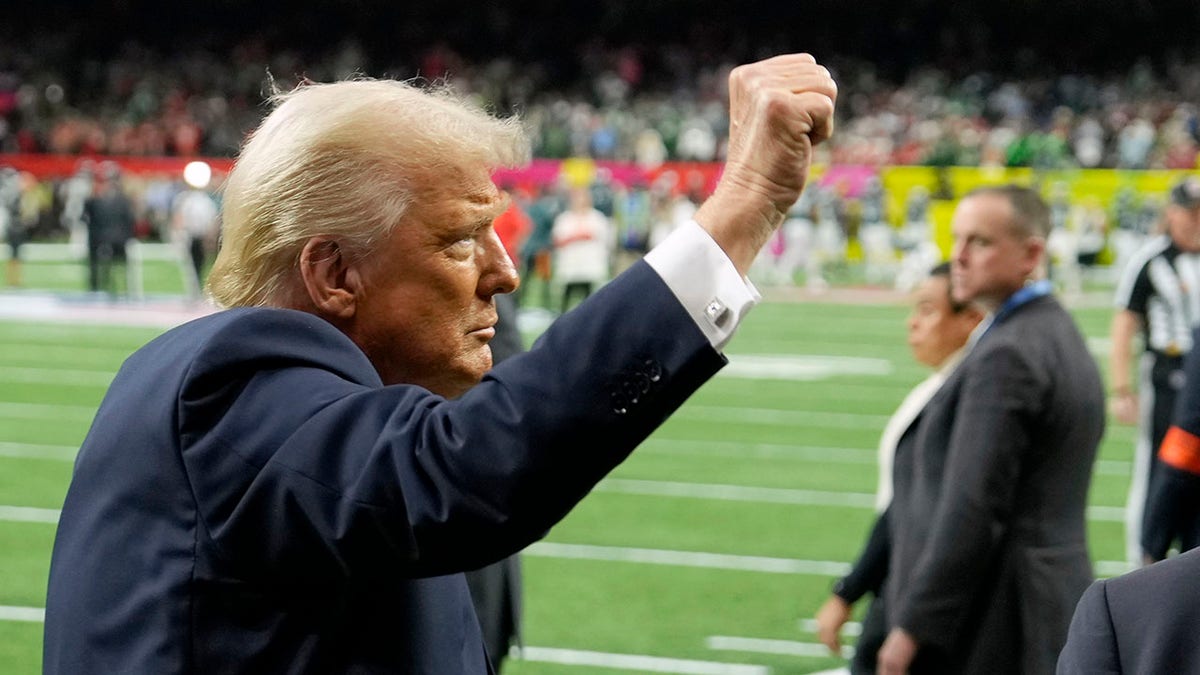
President Donald Trump gestures to the crowd before the start of the NFL Super Bowl LIX football game between the Philadelphia Eagles and the Kansas City Chiefs, Sunday, Feb. 9, 2025, in New Orleans. (AP Photo/Ben Curtis)
ARCH MANNING TO RETURN TO TEXAS FOR 2026 SEASON: REPORTS
“And a lot of these sports that were training so well would win gold medals because of it. Those sports don’t exist, because they’re putting all their money into football. And by the way, they’re putting too much money into it, into football.”
Orgeron has teamed up with player agent Tzvi Grossman to tap into the new NIL era and has learned a great deal as he tries to find his next stop in college football. But despite all the money being passed around, Orgeron still believes that one aspect of recruiting trumps all.
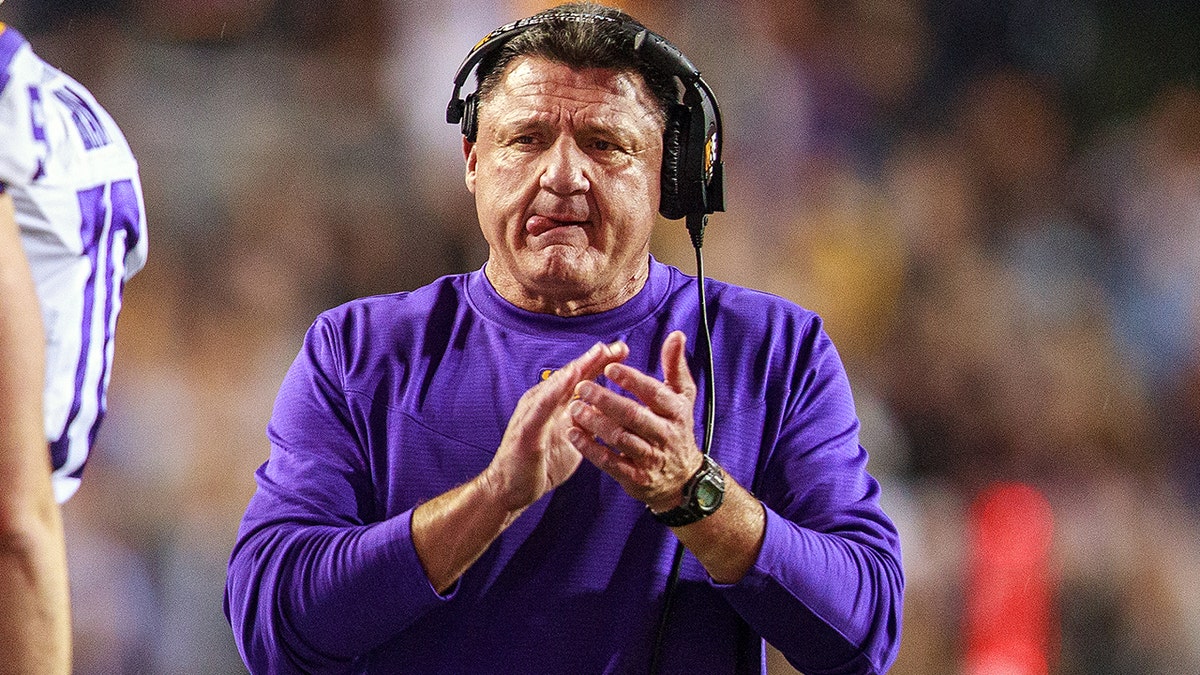
LSU Tigers head coach Ed Orgeron during a game between the Texas A&M Aggies and the LSU Tigers, in Tiger Stadium in Baton Rouge, Louisiana, on Nov. 27, 2021. (John Korduner/Icon Sportswire via Getty Images)
CLICK HERE TO GET THE FOX NEWS APP
“You still have to recruit, you still have to evaluate, you still have to get the mamas, the champions, all that to have a championship football team, and then the (key) word develop,” Orgeron said. “Just because you’re paying the guys — I believe all our players should be paid, I’m with that — but the money that they get right now is not the money that Joe Burrow’s making. It’s not the money that Ja’Marr Chase is making, Derek Stingley’s making. So in other words, to develop at the school you’re going to go to is still important.”
Follow Fox News Digital’s sports coverage on X, and subscribe to the Fox News Sports Huddle newsletter.
NIL
Ohio State QB Julian Sayin Announces NIL News Before College Football Playoff

Julian Sayin is looking to lead the Ohio State Buckeyes to the national title alongside several other stars like wide receiver Jeremiah Smith.
Ohio State heads into the College Football Playoff with one of the best rosters in the country, starring Sayin and Smith along with Carnell Tate, Caleb Downs and Arvell Reese.
They’re heading into the playoffs as the No. 2 seed after losing to Indiana in the Big Ten title game. The Buckeyes will have a bye week to begin the CFP.
Other teams that will benefit from the bye week include Indiana, Texas Tech and Georgia.
During his time off, Sayin shared some exciting news off the field. The Ohio State Buckeyes quarterback has partnered with Wingstop and Dr Pepper in his latest NIL deal.
“Postseason calls for big plays with @drpepper and @wingstop, had to get the play card out,” Sayin posted.
Julian Sayin committed to Ohio State after spending some time with the Alabama Crimson Tide.
While he was planning his college football career at Alabama, he made the move to the Big Ten and finished his first season as the starting quarterback as a Heisman Trophy finalist.
Sayin was ranked as the No. 1 quarterback and the No. 6 overall player in the 2024 recruiting class, per 247Sports.

Before signing his latest NIL deal and sharing the news with fans online, Julian Sayin had inked deals with The Foundation, Dick’s Sporting Goods and JLab Audio.
About the author

Trending News Writer, Athlon Sports
Max Escarpio is one of Athlon Sports’ most prolific writers, having written over 5,000 posts across NBA, NFL, WNBA, college football, and college basketball. A 2023 Florida State University graduate with a BA in Sports Communication, he delivers fast-paced, wide-ranging coverage as part of the site’s breaking and trending news team.
NIL
DJ Lagway’s Florida flameout is a brutal reminder about modern NIL

When NIL first became the way of the land in college athletics, it was meant to be a way for athletes to get a slice of the money that already existed. Coaches, administrators, and other executives were making big money, so why couldn’t the athletes who were the ones actually playing the sport?
In that regard, nobody is going to fault players like DJ Lagway for making millions during his time with the Florida Gators.
But it is how that money had to be raised and what fans were gaslit into believing that also highlight the folly of how the NIL Era in college football has been going.
DJ Lagway set to hit the transfer portal
Lagway’s camp wanted to make it clear that his departure from Gainsville isn’t over money. Whether or not that is actually true, there is a good chance that in the pre-NIL Era, Lagway would still be a Gator heading into next season. If all Lagway cost was a scholarship spot, Jon Sumrall would probably be more apt to keep Lagway around. After a poor 2025 season, we can also understand why Florida’s new staff would be hesitant to invest real resources in Lagway that could go toward other parts of the roster.
But this tale isn’t just about the money that will be spent going forward; it is also about the money already spent and what happens when one doesn’t get a return on investment.
There are no official NIL numbers publicly available, but it is believed Lagway made between $3 and $4 million in 2025.
Some of that came from sponsorship deals like Jordan Brand, Gatorade, Epic Games, and others. But another chunk of money came from whatever deal he signed with Florida Victorious, the NIL arm of the Gators, and this is where the college system is broken compared to the professional system.
If Lagway were an NFL QB and flamed out, it would be annoying, but it wouldn’t be the fans left feeling empty-handed. The money spent on NFL contracts is coming from the natural revenues the league collects, and fans aren’t asked to donate extra money that goes directly to contracts.
But in this first phase of the NIL Era, when teams couldn’t directly share revenue with players, it was the fans who were constantly bombarded with messages to give extra money to Florida to acquire and retain players. The underlying message was “Hey now, if you don’t give more money, some other fanbase will, and they will take DJ Lagway from Florida.”
Some fans might have signed up for the $10 a month plan. Others may have felt compelled to give more. Nobody, however, probably feels like their money was money well spent after this 2025 season.
And that really is the frustration for most fans, where they are gaslighted to believe things won’t get better without giving even more money, but aren’t given any kind of solace when that money gets covered in gasoline and burns up in flames.
So as Florida fans await the next QB to come to town on whatever NIL deal he will be on, Lagway’s journey is a reminder that there is no such thing as a sure investment in the world of college football.
NIL
Two college football powerhouses named logical landing spots for DJ Lagway

Florida Gators quarterback DJ Lagway is officially set to enter the transfer portal following a tumultuous 4-8 season in Gainesville. The former five-star recruit announced his intentions on Monday, just days after the university parted ways with head coach Billy Napier. Lagway, who will likely be the top transfer portal player in the country, departs with two years of eligibility remaining and a desire to join a program that can better utilize his skill set.
The decision comes amid a significant transition for the Florida program. The Gators recently hired Tulane Green Wave head coach Jon Sumrall to lead the team, along with Georgia Tech Yellow Jackets offensive coordinator Buster Faulkner.
Despite the fresh leadership, Lagway informed the new staff of his departure before publicly announcing his move. His exit marks the end of a two-year stint where he threw for over 4,000 yards but struggled with consistency, recording 14 interceptions in his sophomore campaign.
Recruiting analysts have already begun identifying potential destinations for the talented signal-caller. On the Wiltfong Whiparound, On3 analyst Steve Wiltfong and host Josh Newberg discussed the Lagway sweepstakes.
While Lagway’s high school suitors, such as Texas A&M Aggies and USC Trojans, were once heavily involved, the landscape has shifted. The focus now turns to programs with a proven history of developing transfer quarterbacks into NFL prospects.
Steve Wiltfong Identifies LSU And Miami As Top Contenders
According to Wiltfong, the recruitment battle may center on two premier programs with offensive-minded head coaches: the LSU Tigers and Miami Hurricanes. These schools, along with the Baylor Bears, have emerged as the primary teams to watch.
“Our colleague Pete Nakos reported three schools to keep an eye on for DJ Lagway: LSU, Miami and Baylor,” Wiltfong said.
“Lagway’s father played his college football at Baylor. It’s a home-state school. But if you look at DJ Lagway’s high school recruitment, he bet on Florida, bet on himself to help turn the Gators around. I think this time around he makes a decision based on the situation that’s going to put him in the best position to blossom as a player.”

The connection to LSU is driven by head coach Lane Kiffin. Kiffin has a reputation for revitalizing quarterback careers, most notably with Jaxson Dart at the Ole Miss Rebels.
“You look at Lane Kiffin and what he was able to do at Ole Miss, developing a transfer in Jaxson Dart to a first-round draft pick out of USC,” Wiltfong said. “That is something that would be very exciting for DJ Lagway to look at.”
Miami offers a similar appeal under its current leadership. The Hurricanes have successfully integrated high-profile transfers like Cam Ward and Carson Beck, turning them into top-tier passers.

“In Miami, similar track record,” Wiltfong said. “You take a guy like Cam Ward, transferred multiple times, finished his career at Miami, plug-and-play, ultimately develops into the number one pick in the NFL Draft. Carson Beck, this year coming over from Georgia, tops the ACC in many categories, including quarterback rating. Both of those situations are advantageous to me if you’re any transfer quarterback.”
Lagway will officially be eligible to sign with a new program when the transfer portal window opens on Jan. 2.
Read more on College Football HQ
-

 Motorsports3 weeks ago
Motorsports3 weeks agoRedemption Means First Pro Stock World Championship for Dallas Glenn
-
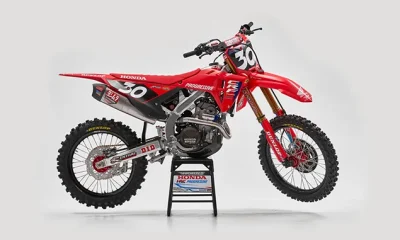
 Motorsports3 weeks ago
Motorsports3 weeks agoJo Shimoda Undergoes Back Surgery
-

 NIL2 weeks ago
NIL2 weeks agoBowl Projections: ESPN predicts 12-team College Football Playoff bracket, full bowl slate after Week 14
-

 Rec Sports3 weeks ago
Rec Sports3 weeks agoHow this startup (and a KC sports icon) turned young players into card-carrying legends overnight
-

 Motorsports6 days ago
Motorsports6 days agoSoundGear Named Entitlement Sponsor of Spears CARS Tour Southwest Opener
-

 Rec Sports2 weeks ago
Rec Sports2 weeks agoRobert “Bobby” Lewis Hardin, 56
-
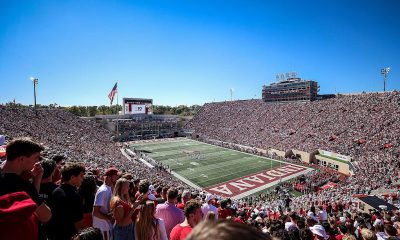
 NIL3 weeks ago
NIL3 weeks agoIndiana’s rapid ascent and its impact across college football
-

 Motorsports3 weeks ago
Motorsports3 weeks agoPohlman admits ‘there might be some spats’ as he pushes to get Kyle Busch winning again
-
Sports2 weeks ago
Wisconsin volleyball sweeps Minnesota with ease in ranked rivalry win
-

 Motorsports3 weeks ago
Motorsports3 weeks agoIncreased Purses, 19 Different Tracks Highlight 2026 Great Lakes Super Sprints Schedule – Speedway Digest





























